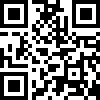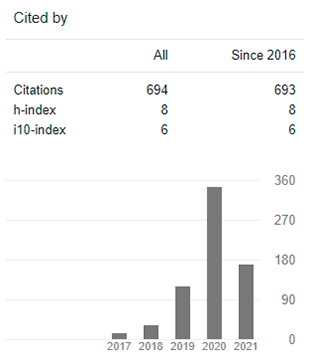Use of Information and Communication Technologies in Basic Education
DOI:
https://doi.org/10.29394/Scientific.issn.2542-2987.2018.3.10.8.154-174Keywords:
information technology, ICT, teacher, basic educationAbstract
The purpose of this article is to expose the factors that affect the use of information and communication technologies (ICT) by basic education teachers, which has become a professional dilemma, due to external causes such as the low availability or absence of centers, software, technological equipment and the Internet, which almost always exist in the hands of people outside of teaching, adding to the scarcity of courses and national training and training programs in computer systems and components of technology, and its insufficient or no insertion in the National Curriculum; This affects the educator, who has inexperience and incomplete knowledge in the use and management of ICT in the field of teaching and learning of minors, leading to situations of insecurity, stress and low motivation, which, together many times to age and resistance to change, are reflected in an education that turns out not to be of high quality. It is a quantitative, bibliographic, descriptive and case study; with a population of 26 teachers, which concludes the need to overcome such deficiencies in favor of an optimal educational process for those who start formal education.
Downloads
References
Álvarez, S., Cuéllar, C., López, B., Adrada, C., Anguiano, R., Bueno, A., Comas, I., & Gómez, S. (2011). Actitudes de los Profesores ante la Integración de las TIC en la Práctica Docente. Estudio de un grupo de la Universidad de Valladolid. Edutec-e. Revista Electrónica de Tecnología Educativa, (35), 1-19, ISSN: 1135-9250. Recuperado de: http://edutec.es/revista/index.php/edutec-e/article/download/416/152
Buela-Casal, G., & Castro, A. (2009). Las Tecnologías de la Información y la Comunicación y la evaluación de la calidad en la Educación Superior. RUSC. Universities and Knowledge Society Journal, 6(2), 3-8, E-ISSN: 1698-580X. Recuperado de: http://www.redalyc.org/articulo.oa?id=78012947007
Castro, S., Guzmán, B., & Casado, D. (2007). Las TIC en los procesos de enseñanza y aprendizaje. Laurus, 13(23), 213-234, ISSN: 1315-883X. Recuperado de: http://www.redalyc.org/pdf/761/76102311.pdf
García, A. (2004). Calidad de la Educación en la Sociedad de la Información. Revista Complutense de Educación, 15(2), 509-520, ISSN: 1130-2496. Recuperado de: https://revistas.ucm.es/index.php
Hüther, G. (2012). Biología del Miedo. El Estrés y los Sentimientos. Barcelona, España: Plataforma Editorial.
Marqués, P. (2006). Impacto de las TICs en Educación: Funciones y Limitaciones. Barcelona, España: Ediciones de Departamento de Pedagogía Aplicada de la Universidad Autónoma de Barcelona. [Documento en línea]. Recuperado de: http://especializacion.una.edu.ve/iniciacion/paginas/marquestic.pdf
Mejía, A., Silva, C., Villarreal, C., Suarez, D., & Villamizar, C. (2018). Estudio de los Factores de Resistencia al Cambio y Actitud hacia el Uso Educativo de las TIC por parte del Personal Docente. Boletín Virtual, 7(2), 53-63, ISSN: 2266-1536. Recuperado de: http://revista.redipe.org/index.php/1/article/download/428/425/
Taylor, S., & Bogdan, R. (2000). Introducción a los Métodos Cualitativos. Buenos Aires, Argentina: Ediciones Paidós. Recuperado de: https://asodea.files.wordpress.com/2009/09/taylor-s-j-bogdan-r-metodologia-cualitativa.pdf
Tramullas, J. (2002). Propuestas de Concepto y Definición de la Biblioteca Digital. III Jornadas de Bibliotecas Digitales JBIDI. San Lorenzo del Escorial. Madrid, España: Universidad Politécnica de Madrid. Recuperado de: http://eprints.rclis.org/15118/
Vaillant, D. (2014). Formación de Profesores en Escenarios TIC. Revista e-Curriculum, 12(2), 1128-1142, ISSN: 1809-3876. Recuperado de: http://www.redalyc.org/pdf/766/76632206003.pdf
Published
How to Cite
Issue
Section
License
Copyright (c) 2018 INDTEC, C.A.

This work is licensed under a Creative Commons Attribution-NonCommercial-ShareAlike 4.0 International License.
The content of the journals of this site, are under a Creative Commons Attribution-Noncommercial-Share Alike 4.0 International License.













